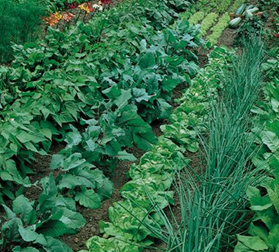
What is crop rotation?
Crop rotation is one of agriculture’s oldest cultural practices. In a home vegetable garden, crop rotation involves changing the planting location of vegetables within the garden each season. Crop rotation is used to reduce damage from insect pests, to limit the development of vegetable diseases, and to manage soil fertility.
Why is crop rotation important?
Each vegetable can be classified into a particular plant family. Plants belonging to the same family oftentimes are susceptible to similar insect pests and diseases, and have similar nutrient requirements. When vegetables classified in the same plant family are grown year after year in the same area of a garden, they provide insect pests with a reliable food source and disease-causing organisms (i.e., pathogens) with a continual source of host plants that they can infect. Over time, insect pest and pathogen numbers build in the area and damage to vegetable crops increases. Using crop rotation helps keep insect pest and pathogen numbers at low levels. In addition, the type of vegetable grown in a particular area in a garden has a direct effect on the fertility of the soil in that area. Each vegetable is unique in the type and amount of nutrients it extracts from the soil. Crop rotation can even out the loss of different soil nutrients and allow time for nutrients to replenish.
How do I plan a crop rotation for my home garden?
Plan the crop rotation for your vegetable garden based on the types of vegetables that you grow. Vegetable crops in the same plant family should NOT be planted in the same area of a garden year after year. For example, if tomatoes are planted in a bed or area of a garden one year, vegetable crops such as peppers, eggplant, potatoes and tomatoes should not be planted in the same bed or area the following year because all of these plants belong to the nightshade family (Solanacaeae). Table 1 provides a guide to common garden vegetables and their plant families.
Crop rotations vary in complexity. They can be as simple as changing vegetable locations annually, or can be extremely involved, using cover crops/green manures, and/or leaving parts of a garden fallow (i.e., planting nothing in an area) each year. Cover crops/green manures are planted before, after or in place of a vegetable crop to improve soil fertility and drainage, prevent erosion, and hold nutrients. See University of Wisconsin Garden Facts XHT1209, “Using Cover Crops and Green Manures in the Home Vegetable Garden” for details. Leaving an area fallow is often less desirable than planting a cover crop/green manure because an area without a planted crop tends to be more prone to erosion and can end up with a soil that does not drain properly. Alternatively, the area may become filled with weeds that will cause problems for future vegetable production.
For crop rotation to be most effective, DO NOT plant an area with vegetables or cover crops/green manures from the same plant family more than once every three to four years. This length of crop rotation can be difficult to achieve in small gardens, but even changing plant families grown in an area of a garden from year to year is helpful in managing insect pests and diseases. To help in planning crop rotations, keep a garden log or map as a reminder of where vegetables are planted each year.
Table 1. Common vegetables and their plant family classifications
| PLANT FAMILY | VEGETABLE |
| Carrot Family (Apiaceae) | Carrot, celery, parsley, parsnip |
| Goosefoot Family (Chenopodiaceae) | Beet, spinach, Swiss chard |
| Gourd Family (Cucurbitaceae) | Cucumber, muskmelon, pumpkin, summer squash, watermelon, winter squash |
| Grass Family (Poaceae) | Ornamental corn, popcorn, sweet corn |
| Mallow Family (Malvaceae) | Okra |
| Mustard Family (Brassicaceae) | Broccoli, Brussels sprouts, cabbage, cauliflower, Chinese cabbage, collard, kale, kohlrabi, mustard greens, radish, rutabaga, turnip |
| Nightshade Family (Solanaceae) | Eggplant, pepper, potato, tomato |
| Onion Family (Alliaceae) | Chives, garlic, leek, onion |
| Pea Family (Fabaceae) | Bush bean, kidney bean, lima bean, pea, pole bean, soybean |
| Sunflower Family (Asteraceae) | Endive, lettuce, sunflower |
Doug Higgins and Kristin Krokowski, Extension Waukesha County
Revised: 4/9/2012
Item number: XHT1210
Download Article





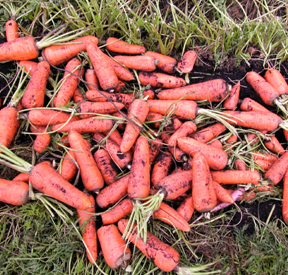 Safely Using Manure in the Garden
Safely Using Manure in the Garden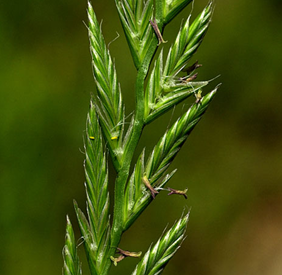 Using Cover Crops and Green Manures in the Home Vegetable Garden
Using Cover Crops and Green Manures in the Home Vegetable Garden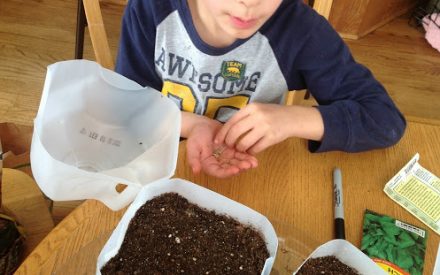 Seed Starting
Seed Starting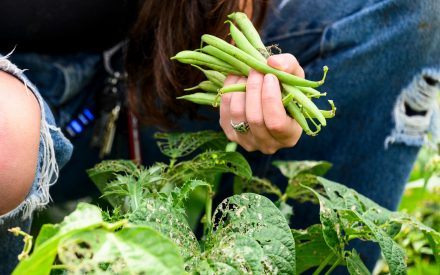 Harvesting Vegetables from the Home Garden
Harvesting Vegetables from the Home Garden


